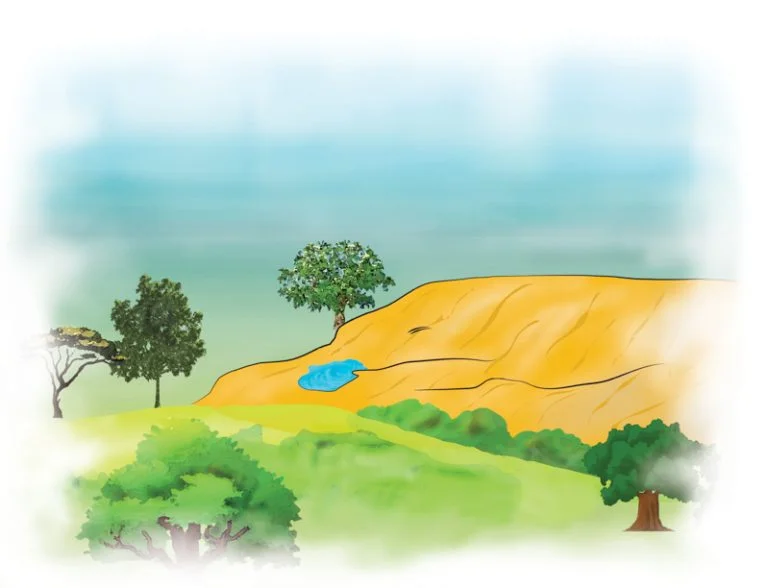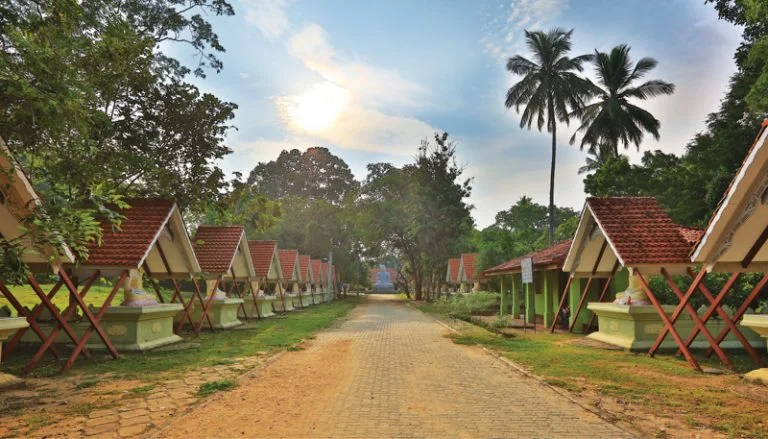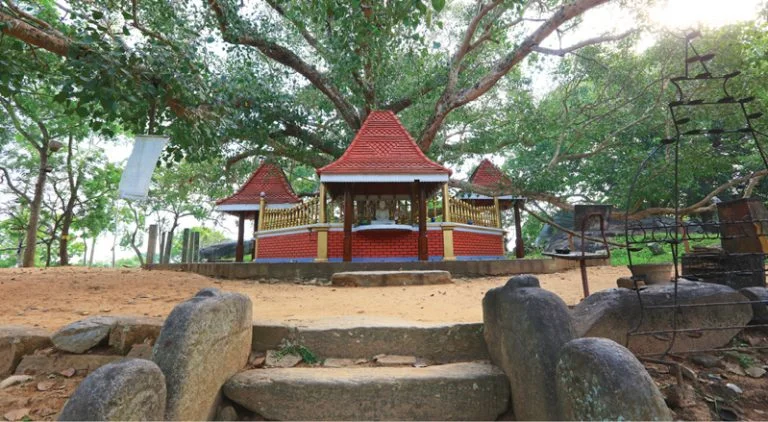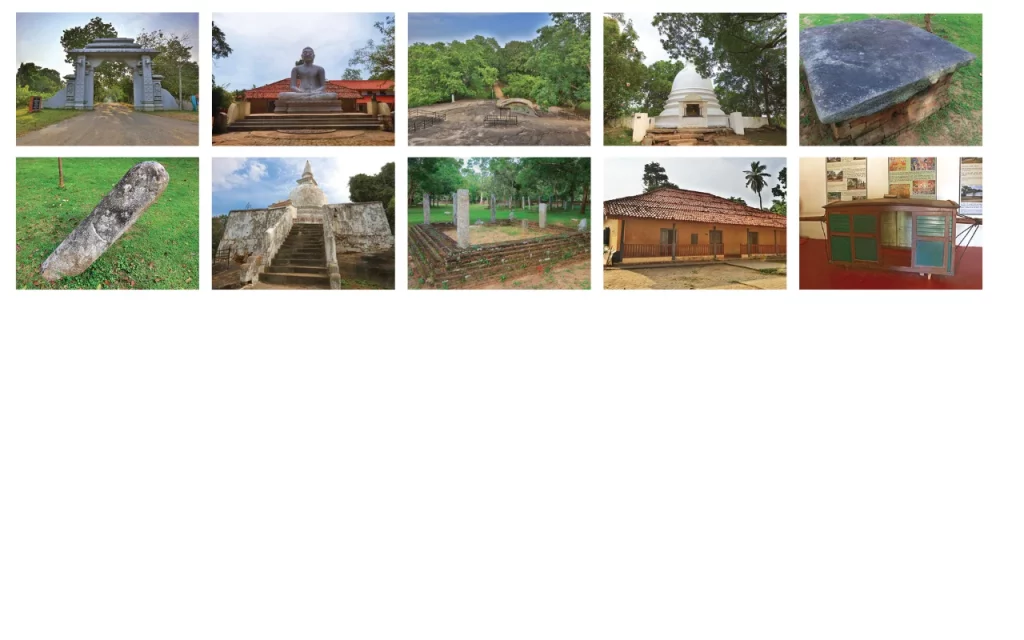
With a rich past linked to numerous historical events, the Kasagala Raja Maha Viharaya offers many insights into an ancient era.
Words Nadeera Jayasinghe
Photographs Geeth Viduranga
As we drove through south-eastern Sri Lanka on our way back to Colombo, leaving behind the salterns of Hambantota, a barely noticeable right turn at a fork on the motorway led us on the Ranna-Weeraketiya road. Soon we were enveloped in endless vistas of dry zone vegetation and that lush shade of green quite unique to paddy fields. It was a panorama that was only momentarily interrupted by the construction work on the southern expressway’s extension heading towards Hambantota. Shortly thereafter, upon reaching Udayala, we came upon the Kasagala Raja Maha Viharaya.
We entered through the ornamental structure known as the thorana. The temple grounds were filled with large trees, the air was still, and the entire space had a noble atmosphere. Something about the aura of the site had hushed us to silence. We found ourselves stepping onto a pathway flanked on either side by numerous seated Buddha statues. A closer look revealed that the statues represented and paid homage to the 28 Buddhas who have existed thus far as related in the Buddhavamsa, and the trees under which each Buddha had attained enlightenment. Every corresponding tree had taken root and was flourishing behind the respective Buddha statue.
Kasagala Raja Maha Viharaya traces its origins back to the time of the Anuradhapura era during King Devanampiyatissa’s reign. Many monarchs, including Kavan Tissa, Saddha Tissa, Dutugemunu, Vijayabahu I and Kirti Sri Rajasinghe, are known to have contributed to the upkeep and development of the premises. Many improvements made during Kirti Sri Rajasinghe’s reign has lent the temple architectural elements from the Kandyan era, as witnessed in the beautifully designed sanghavasa and several other buildings.

The Bodhi tree at Kasagala Raja Maha Viharaya is recognised as one of the dhethispala ruha bodhi planted by King Devanampiyatissa. These are the 32 offshoots of the ashtapala ruha (eight plants). These ashtapala ruha bodhi had grown out of the sacred Bo sapling that was carried to the island from the Sri Maha Bodhi or Sacred Fig under which Gautama the Buddha attained enlightenment.
Kasagala Raja Maha Viharaya is also famous for having been the temporary abode of the sacred tooth relic when it was moved within the country for protection from invading foreign forces. When it was relocated, a replica made of gemstone was deposited in its place at the temple. The slab of rock, which had once concealed the sacred tooth relic when it was buried in the earth, now rests on bricks to save it from damage. An annual Dalada Perahera that was conducted in ancient times was restored at Kasagala Raja Maha Viharaya about 20 years ago.
A rampart surrounds the grounds of the former palace that later became a monastery. Structures believed to have once belonged to the former palace, archaeologically identified as such, could still be seen within this ancient citadel.
Within the rampart are two chaitya (or stupas) of similar size. The chaitya on the rock is believed to have been built by King Dutugemunu, while the other on lower ground during the reign of his brother King Saddha Tissa.

In fact, this rock, with a pond upon it, has contributed to naming the temple. According to folklore, when the vedda (indigenous community) went on a hunt, they saw a yellow rock. This was because the arahants who lived there would wash their saffron-coloured sivuru (robes) in the water source and dry them on the surface of the rock. The vedda called it kaacha galla and, over time, it changed to kaasa pabbatha or parvatha and kasaa-watha before ending with the current name of Kasagala. Another narration about the origin of the name is that the area dazzled with the golden rays emitted by the arahants who resided there.
The ancient stone pillars scattered on the grounds are said to be the remnants of the arahants’ meditation kuti (huts). One stone pillar, however, is where King Dutugemunu’s famous royal tusker the Kadol Atha (Kadol Elephant) had been tethered after it was brought from the jungle, having been cornered in a kadolana (mangrove) in the Rekawa-Marakolliya area, not far from Udayala.
Recognised as an archaeological site by the Government of Sri Lanka, the Kasagala Raja Maha Viharaya hosts an office and museum of the Department of Archaeology. In addition to the panels that provide insight into the temple’s history, a dholawa (palanquin) that had reportedly transported Gajaman Nona is housed in the museum.
While this region of Sri Lanka has a huge array of culturally rich edifices making it challenging to select a few to explore, it is well worth making a stop at Kasagala Raja Maha Viharaya.



